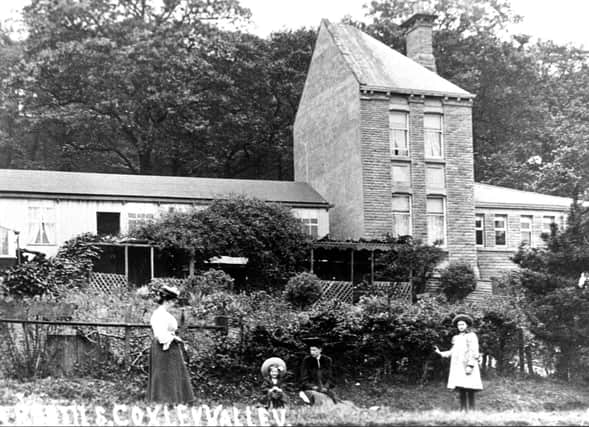Nostalgia with Margaret Watson: Happy childhood memories of sunny days out and about exploring nature


Margaret Watson writes: I could not remember when I’d last seen a buttercup, so just looking at them was enough to send my mind spinning back to childhood.
It brought back memories of the days when all the kids up our street would set off on sunny mornings in search of pastures new.
Clutching our bottles of water and slices of jam and bread wrapped in newspaper, no cling film in those days, we’d set off in high spirits.
Our destination could have been anywhere because we didn’t really plan our route but we knew wherever it was, we’d have a great day.
I remember that we never fell out or argued as to where we might end up because we had a good leader showing us the way.
The leader of our little pack was usually my older sister Winnie, who, although gentle and kind, led us on with certainty and confidence.
Bluebell Wood was one of our favourite places in the spring, but we also travelled further afield to Howley Ruins in Birstall, or Coxley Valley in Netherton.
Why we travelled all the way to Birstall to look at some old ruins, some ancient castle I presume, I will never know.
But we knew it was locally famous for something and so off we’d go, always prepared to learn something new.
What a wonderful escape it was for us to have a day in the country far away from belching mill chimneys and the confines of our overcrowded streets.
We always set off early in the morning and wouldn’t return until dusk, tired and weary after spending a day in the fresh air completely unsupervised.
With no adults dictating what we did, we could wander on our own without a worry in the world, picking wild flowers and searching in the grass for ladybirds.
Whenever we found one we would all gather round and sing this little song to it – “Ladybird, ladybird, fly away home, your house is on fire and your children alone.”
We roamed through woods, ran across meadows, climbed trees and paddled in babbling brooks, breaking off occasionally to play leap frog.
I cannot remember any of us ever falling out or getting hurt as we rolled about and it certainly never rained.
We loved searching for interesting things which we could investigate, tell stories about, and weave a little mystery and magic into.
We would look at dandelions but never picked them, and certainly never took them home because if we had done we would certainly have wet the bed. That was the childish superstition we believed in.
But the flowers we avoided like the plague were the ones growing on bushes in the hedgerows which we called “mother dies”.
Childhood legend warned that if we ever took any of them home, then our mother would surely die, and no-one was going to risk that.
We were always on the look-out for anything of interest which we could investigate, weave stories around, and make our own.
If we found a woolly boy, which was a fat, hairy caterpillar, we carefully placed him in an empty matchbox which we’d taken with us for that very purpose.
We would punch holes on the top so he wouldn’t suffocate, and also put a little bit of grass inside for him to munch on.
The humble little buttercup also had its own story to tell which we never tired of telling.
We would hold a buttercup under the chin of every child and if it shone a golden light on their skin, it was proof that they loved butter.
But this was during the war and there wasn’t much butter about, and wouldn’t be for a few years to come, but the legend still prevailed.
After exploring everything there was to explore, we made buttercup and daisy chains to hang round our necks as mementoes of our travels.
We also picked huge bunches of bluebells to take home and place in milk bottles on the windowsill outside our homes.
If I was in a spiritual mood and not too tired, I would place mine in front of a little statue of Our Lady which stood on a small table at the side of my bed.
I knew it would make her happy because we had been told by the nuns at school that blue was Our Lady’s favourite colour.
The peace and quiet we experienced on these travels was so different to what we were used to in busy industrialised Dewsbury, and the silence sometimes seemed a little eerie.
But the occasional sound of a train in the distance or church bells ringing at evensong were reassuring signs that we weren’t all that far from civilisation.
We didn’t have a garden at home and there were no trees down our street so we didn’t hear much birdsong, just the occasional cooing of a passing pigeon.
There was so much we children needed to learn about the countryside and how best to respect it and preserve it, but there was no-one to tell us.
There was no grass to sit on near our homes and there was no grass in our Catholic schoolyards or church grounds, just Tarmac.
The nearest patches of grass we could sit on without being chased off were in local parks and the countryside surrounding us.
We were also lucky that we children enjoyed a kind of freedom our children have never known and never will.
Our parents didn’t even ask us where we were going when we were setting off on those sunny mornings of yesteryear.
They didn’t even ask us what time we’d be back. If that was happening today Social Services would be called in, don’t you think?
Happy days.